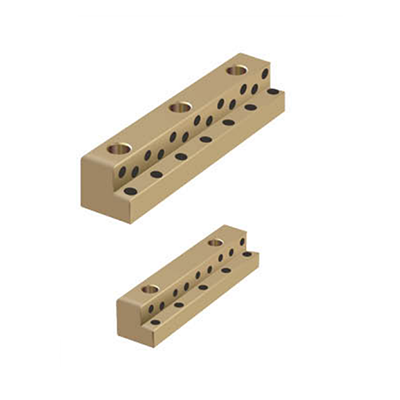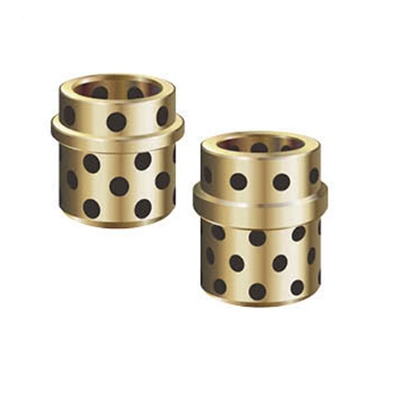SF-1F flange bushing is a composite bushing made of two metal materials, usually aluminum alloy or copper alloy as the base material, and the surface is covered with tin-containing lead-based alloy or other wear-resistant materials. Through this bimetallic structure, the bushing can provide excellent wear and corrosion resistance, and has good self-lubricating ability. This makes SF-1F flange bushing particularly suitable for high loads and occasions requiring a long service life.
SF-1F Flange Bushing Specifications
Size Range
SF-1F flange bushings can be customized from small bearings to large-size flange bushings to meet the needs of different mechanical equipment. Common inner diameter sizes range from a few millimeters to hundreds of millimeters, and non-standard sizes can be provided according to customer needs.
Material
Base material: Aluminum alloy, copper alloy and other metal materials with high strength and good thermal conductivity.
Surface material: Tin-containing lead-based alloy, or other alloy materials with a low friction coefficient, providing self-lubricating function.
Load-carrying capacity
Due to its unique bimetallic structure, the SF-1F flange bushing can withstand static pressures of up to hundreds of MPa. Combined with its low surface friction coefficient, the bushing can also maintain a low wear rate under high speed and load conditions.
Operating temperature
The operating temperature range of the SF-1F flange bushing is typically -40°C to +120°C, but special materials and processes can be customized according to customer needs to adapt to higher temperature environments.
Tolerance standards for SF-1F flange bushings
The tolerance of the flange bushing is a key factor in ensuring installation accuracy and operating efficiency. For SF-1F flange bushings, the usual tolerance requirements include:
Inner diameter tolerance
Depending on the design requirements, the tolerance of the inner diameter is usually ±0.01mm to ±0.05mm. For precision applications, strict tolerance control is required to ensure the fit accuracy between the bushing and the shaft.
Outer diameter tolerance
The tolerance of the outer diameter is generally controlled between ±0.05mm and ±0.1mm. For applications that require precision assembly, the tolerance requirements for the outer diameter may also be more stringent.
Thickness tolerance
The wall thickness of the SF-1F flange bushing usually has a stricter tolerance control, and the common tolerance range is ±0.05mm to ±0.1mm, depending on the design requirements and application environment.
Flange thickness and aperture tolerance
The thickness and aperture of the flange part need to be customized according to the installation and matching requirements, and the tolerance is usually ±0.1mm. In order to ensure the stability and load-bearing capacity of the flange bushing, the size requirements of the flange part are relatively strict.
Surface roughness
The surface roughness of the SF-1F flange bushing is usually controlled between Ra0.4 and Ra1.6. Lower surface roughness can effectively reduce friction resistance and extend the service life of the bushing.
Application areas of SF-1F flange bushing
The excellent performance of the SF-1F flange bushing makes it widely used in multiple industries, including but not limited to:
Automotive industry: In components such as engines and transmissions, the SF-1F flange bushing can withstand high-load working environments and effectively reduce friction and wear.
Mining and construction machinery: Due to its good wear resistance and pressure resistance, SF-1F flange bushings are often used in sliding parts of heavy machinery and equipment.
Power equipment: Under high load and high speed conditions, SF-1F flange bushings can effectively reduce energy loss and improve the operating efficiency of equipment.
Agricultural machinery: In agricultural machinery, SF-1F flange bushings can improve the working efficiency of machinery and extend the service life of equipment.

 English
English Español
Español



